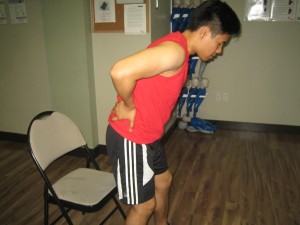Fact Checked
Hip pain is considered one of the conditions that are difficult to diagnose since the pain can stem from various areas and also have different causes. The pain can range from sharp pain radiating from the lower back up to the hip and into the leg or a dull ache in the hip joint. Even though examination and imaging tests such as an X-ray can identify the exact cause of the hip pain, there are some techniques that can help you pinpoint the possible causes.
How identify the cause of hip pain
The following methods can be used in order to identify the cause of the hip pain.

- Initially check the joints surrounding the hip, legs and lower back to locate any stiffness, swelling, pain or redness. In some cases, the pain can originate from arthritis and quite evident among the elderly. You can provide anti-inflammatory medications in order to minimize the swelling and pain.
- Examine the toes of the leg where hip pain occurred to determine whether they turn out. In such cases, a fracture on the hip might be the cause. The next step is to lift, straighten and assist the individual on standing on the leg. Any pain that manifests from these movements can also indicate a hip fracture. You can consult a doctor if the fracture is a potential cause of the pain. Always remember that hip pain that does not occur from these movements can indicate bruised hips which can be treated with application of ice and anti-inflammatory medications. If you want to effectively use ice on injuries, click here.
- You have to determine whether the pain in the hip actually stems from the area close to the lower back and radiates down to the buttocks and leg. A pinched nerve or sciatica might contribute to the hip pain if these symptoms manifest. When treating this condition, the effective approach is a combination of heat application, rest and anti-inflammatory medications. In case the pain persists or worsens such as inability to control urination or bowel movements, it is best to consult a doctor.
- Check the hip if you suspect that the individual sustained an injury. You have to pay close attention if there is a popping noise. You can utilize a mirror to check if the hip joint looks distorted and assist the individual to stand using the affected leg to check if it can support weight.
- If there is a clicking noise that is accompanied by pain in the hip while performing certain activities, it might be caused by a congenital hip problem that is usually acquired at birth. This condition must be carefully assessed by a doctor. The individual should ask about imaging tests such as an X-ray which is highly effective in diagnosing the severity and type of hip pain experienced by the individual.
